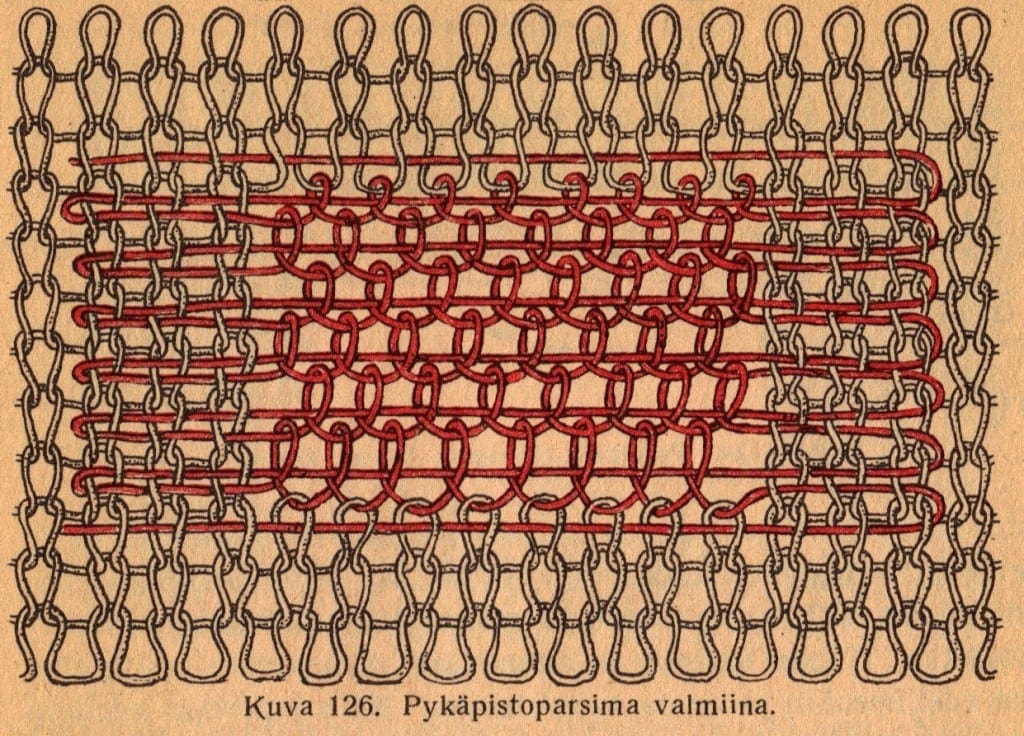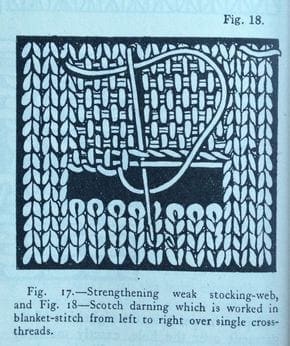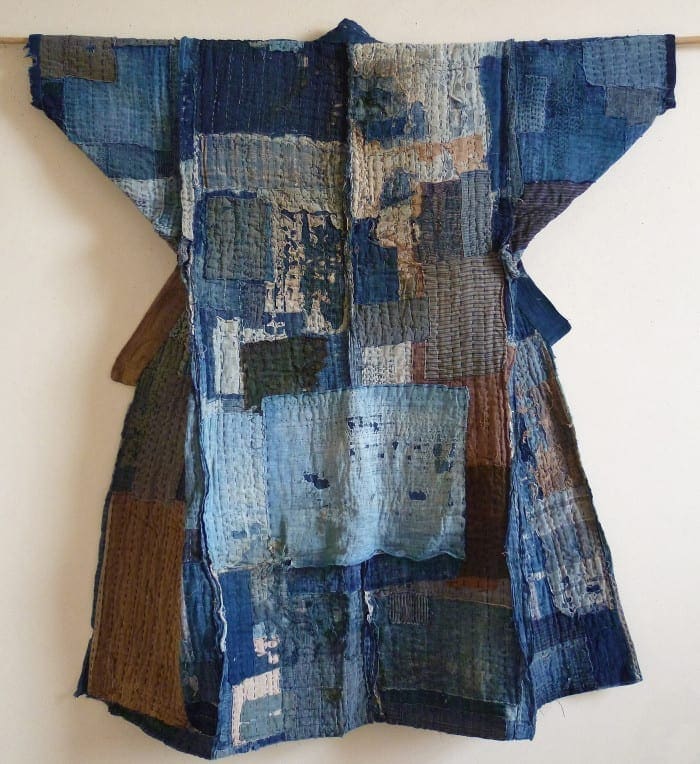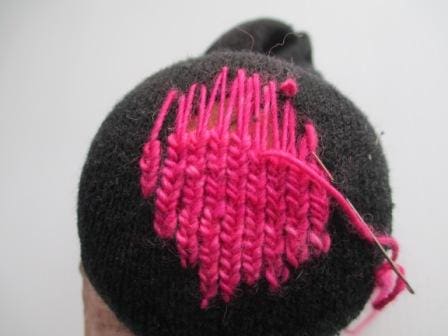So far I’ve been using a very basic darning stitch – I have the mantra ‘over under’ constantly running through my mind as I work. But thanks to reading Tom van Deijnen’s (tomofholland) blog I’ve become aware of other darning methods, Finnish, Scottish and Swiss – all European. To get ready to use these new-to-me techniques, I’ve gone to the box of things waiting to be mended and pulled out some socks – usually I’ve use black wool on the black socks to make the darn as inconspicuous as possible, but it is not so easy to see the definition of the stitches. Looking in my stash of yarn I found some 3 ply pink that was perfect. The owner of the socks was bemused when shown the repairs, but commented he’ll make sure not to wear them if he thinks there is any chance he will have to remove his shoes. The second garment, now underway uses the Scottish darning stitch
. Finnish darning.
Finnish darning.
 Scottish darning
Scottish darning
In looking through all the images of visible mending there are a great many using patches. These are more often associated with woven textiles such as denim. They usually feature the glorious patterns of Japanese Sashiko stitching which, using the layering of patches of kimono fabric in the boro technique meant garments could almost last indefinitely. Both the awareness of this combined technique and the appreciation of its versatility seem to be growing.
 Historical Japanese garment held in the Smithsonian collection
Historical Japanese garment held in the Smithsonian collection
I have to say up front – I’m no expert. Perhaps the process of darning allows too much time for negative thoughts to creep in, but questions and certainly a level of guilt arises about taking a perfectly good used garments and potentially making them unwearable by cutting /poking holes in them do occur. I worry to about how my stitching be assessed, yes, I’ve been darning socks and school jumpers for years, but the audience for these efforts was uncritical and usually unaware, time was short and the wool was thick and forgiving. The metallic thread turns out to be tricky to sew with, the fine metal foil strips wound tightly around the silk thread core have a tendency to snag and concertina and it doesn’t form tight turns easily – learning what can and can’t be done, and ways of managing the problems is all part of the fun and frustration of tackling something new.
Tom vn Deijnen runs the Visible Mending programme in Brighton and has a mission to show that repairs to clothes can in themselves be beautiful. “Wear your darn like a badge of honour,” he says.
Thank you Tom!


